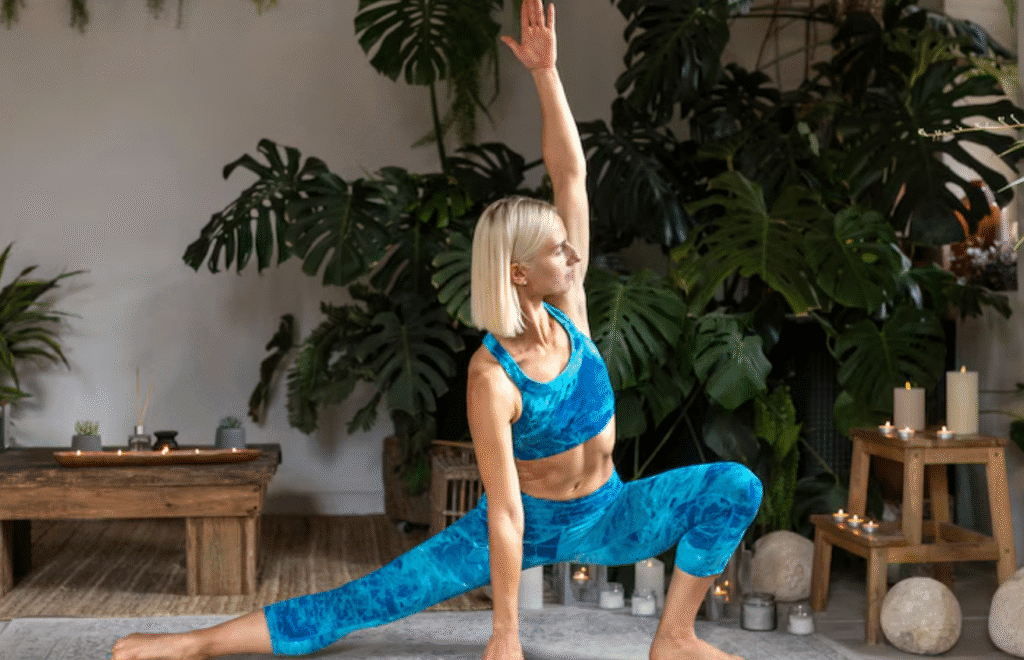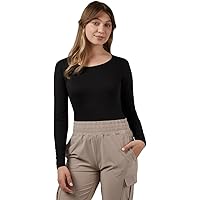Practicing yoga at home offers freedom, flexibility, and the comfort of your own space—no commute, no class schedules, and no pressure to perform. Whether you’re a beginner or a seasoned yogi looking to deepen your personal practice, creating a dedicated yoga space and routine at home can be incredibly rewarding.
This article walks you through everything you need to know to start and sustain a home yoga practice, from setting up your space to building a routine and staying motivated.
🧘♀️ 1. Set Your Intention: Why Do You Want a Home Practice?
Before you begin, it helps to reflect on your goals. Ask yourself:
- Are you practicing for stress relief?
- Do you want to build strength or flexibility?
- Is your goal spiritual growth or mindfulness?
Having a clear intention will help guide your practice style, duration, and commitment.
🧹 2. Create Your Yoga Space
A peaceful environment encourages consistency and focus. You don’t need a full room—just a small, dedicated area will do.
✔️ Tips to Set Up Your Space:
- Find a quiet spot with natural light if possible.
- Lay down your yoga mat and leave it out if space allows.
- Add calming elements like:
- A small altar (candles, crystals, statues)
- Plants for freshness and life
- Incense or essential oil diffuser for aroma
- Speakers for gentle music or guided sessions
- Keep it clean, clutter-free, and inviting.
🪷 “Your space reflects your inner state. A calm corner supports a calm mind.”
📆 3. Build a Routine That Works for You
One of the biggest benefits of home practice is flexibility. That said, consistency is key to progress.
📌 Set a schedule:
- Pick a time that works best (morning is ideal for energy, evening for winding down).
- Even 10–15 minutes a day is effective when done consistently.
- Use calendar reminders or habit-tracking apps to stay on course.
🔄 Choose your frequency:
- Beginners: 2–3 times per week
- Intermediate/Advanced: 4–6 times per week
🗓️ Weekly example:
| Day | Focus |
|---|---|
| Monday | Vinyasa flow (strength + breath) |
| Tuesday | Gentle or restorative yoga |
| Wednesday | Core or flexibility work |
| Thursday | Breathwork + meditation |
| Friday | Power yoga or balance practice |
| Weekend | Yin yoga or full-body stretch |
📺 4. Choose the Right Resources (If You’re Not Going Solo)
If you’re not designing your own flow yet, use guided sessions from trusted sources.
🎥 Great platforms for home yoga:
- YouTube (e.g., Yoga with Adriene, Fightmaster Yoga, SarahBethYoga)
- Apps: Down Dog, Glo, Daily Yoga, Insight Timer
- Books: “Light on Yoga” by B.K.S. Iyengar or “The Heart of Yoga” by T.K.V. Desikachar
Start with beginner-friendly flows and gradually explore different styles and teachers.
🧘 5. Plan Your Sequence (If Going Self-Guided)
If you want to build your own practice, include these basic stages:
- Centering (1–2 min): Sit or lie quietly, set an intention.
- Warm-up (5 min): Gentle stretches, cat-cow, child’s pose.
- Main Flow (10–30 min): Standing poses, balancing, backbends.
- Cool Down (5–10 min): Seated stretches, twists, forward folds.
- Savasana (3–10 min): Lie down, fully relaxed.
Optional: Add pranayama (breathwork) or meditation at the beginning or end.
📦 6. Equipment You Might Need
You don’t need a lot to get started. Here’s a basic list:
| Item | Purpose |
|---|---|
| Yoga mat | Non-slip surface for safe movement |
| Yoga blocks | Help with alignment and modifications |
| Strap or belt | Aids flexibility and safe stretching |
| Blanket | For comfort in seated/supine poses |
| Bolster (optional) | Supports restorative poses and meditation |
You can improvise with household items—pillows for bolsters, books for blocks.
🧠 7. Stay Motivated and Mindful
🌀 Strategies to Keep Going:
- Start small: Don’t aim for perfection—focus on consistency.
- Track your progress: Use a journal or calendar.
- Celebrate small wins: Completing a week or holding a pose longer.
- Vary your practice: Explore new poses, music, or styles.
- Connect: Join online communities or challenges for accountability.
🧘♀️ Mindset Tips:
- Let go of expectations—some days are easier than others.
- Practice self-compassion over self-judgment.
- Focus on how you feel, not how it looks.




